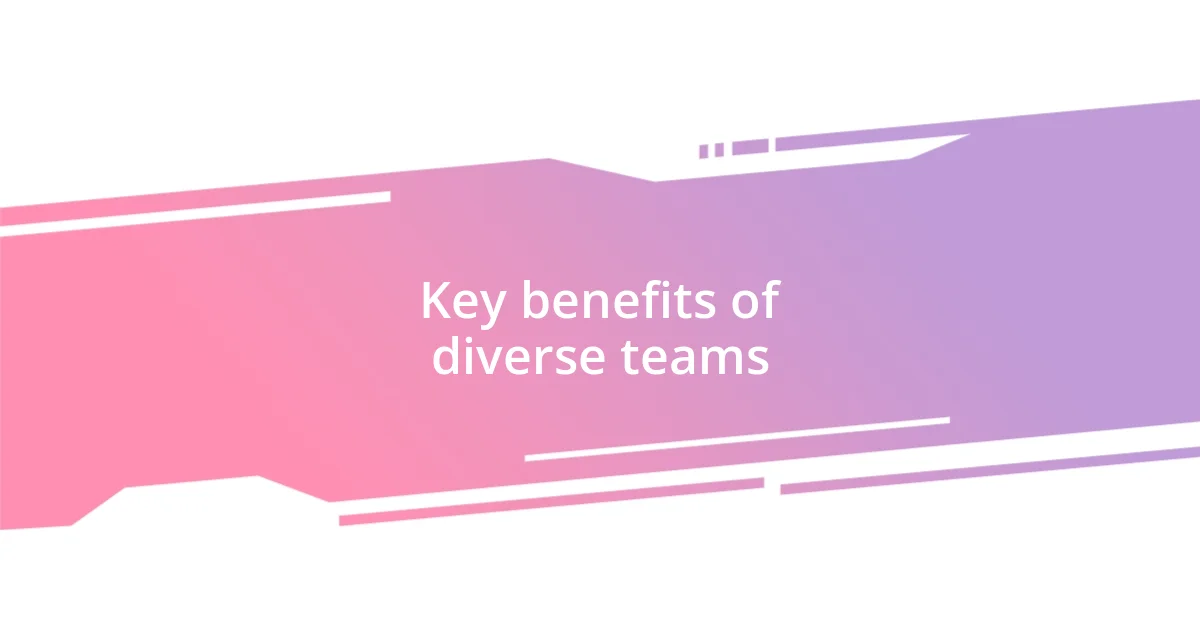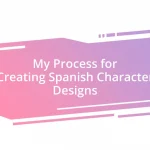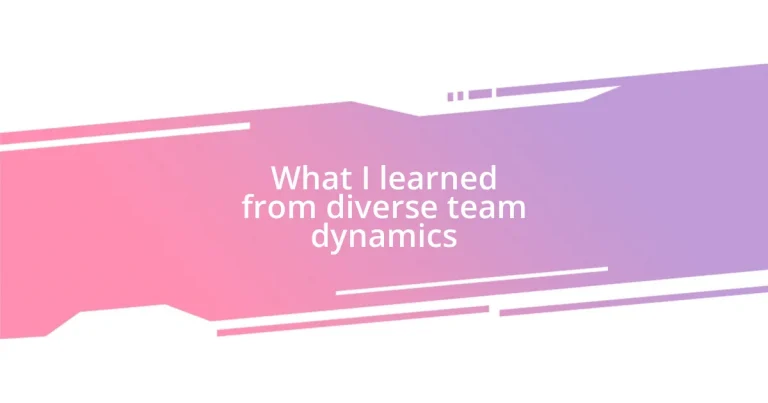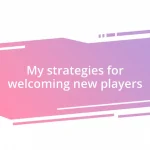Key takeaways:
- Diverse team dynamics enhance creativity and innovation, driven by unique perspectives that foster richer discussions and problem-solving.
- Effective communication is crucial; techniques like active listening and inclusive practices can transform team interactions and build trust.
- Empathy and conflict resolution strengthen team cohesion, enabling constructive dialogues that improve relationships and outcomes.

Understanding team dynamics
Understanding team dynamics is like peeling an onion—there are so many layers to discover. In my experience, every team possesses its unique rhythm influenced by individual personalities, shared goals, and past experiences. Have you ever noticed how a single person’s energy can shift the entire atmosphere of a group? I certainly have, especially when a passionate team member breathes life into a dull meeting.
When I was part of a diverse project team, I quickly learned the importance of different perspectives. We had members from various cultural backgrounds, and every discussion became a vibrant exchange of ideas. It amazed me how varying viewpoints led to more comprehensive solutions. It makes me wonder—how often do we underestimate the value of diversity in sparking innovation?
Analyzing team dynamics isn’t just about roles or responsibilities; it’s about relationships. I recall a time when open communication transformed a conflict into collaboration. By fostering an environment where everyone felt heard, we not only strengthened trust but also enhanced our overall performance. Isn’t it fascinating how understanding one another can lead to achieving common goals more effectively?

Importance of diversity in teams
The significance of diversity in teams cannot be overstated. When I joined a project with colleagues from varied backgrounds, I was struck by how our differences fueled creativity. Each member brought unique experiences to the table, which often sparked ideas I had never considered. Can you imagine the possibilities if diversity is embraced as a core strength instead of an obligation?
Another eye-opening moment for me was during a brainstorming session. A teammate from a different country shared insights into cultural approaches to problem-solving that shifted our entire strategy. It made me realize that diversity isn’t just about representation; it’s about harnessing a wealth of knowledge that leads to better decision-making. Have you ever felt like you were seeing in color after years of black and white? That’s how I felt afterward—energized!
Moreover, diverse teams naturally promote an inclusive culture. When I reflect on my experiences, I see how the different perspectives fostered empathy and collaboration. People began to look beyond their own viewpoints, enhancing mutual respect and understanding. The emotional connection that formed among us was palpable; it truly felt like we were working toward a shared vision together.
| Diversity Benefits | Impact on Team Dynamics |
|---|---|
| Broader Perspectives | Creative Problem-Solving |
| Increased Empathy | Stronger Collaboration |
| Enhanced Innovation | Improved Decision-Making |

Key benefits of diverse teams
The advantages of diverse teams are truly powerful. I remember working on a project where the blend of backgrounds led to unexpected insights. One afternoon, a team member shared a unique approach from their upbringing. That simple moment sparked an idea that shifted the entire direction of our project. It’s moments like these that remind me diversity isn’t just beneficial; it’s essential for genuine innovation.
Here are some key benefits I’ve observed firsthand:
– Broader Perspectives: Different cultures illuminate a variety of viewpoints, enriching discussions.
– Enhanced Creativity: Unique backgrounds result in unique ideas that can lead to breakthrough solutions.
– Stronger Collaboration: Working with diverse individuals often cultivates a deeper sense of trust and teamwork, making collaboration more effective.
– Improved Decision-Making: Drawing from a wide range of experiences allows teams to analyze challenges more comprehensively.
– Increased Empathy: Exposure to diverse perspectives fosters understanding and compassion among team members, strengthening relationships.

Challenges faced in diverse teams
Working in a diverse team often brings a unique set of challenges. One difficulty I encountered was communication barriers, particularly when team members had varying levels of proficiency in the primary language spoken at work. It could be frustrating at times, as important points were sometimes lost in translation. Have you felt that moment when you’re trying to relay a key idea but realize it’s not coming across clearly? I certainly have, and it serves as a reminder of the importance of patience and clarity in our exchanges.
Another challenge that stood out to me was the clash of cultural norms. I remember a particularly heated debate over deadlines. For some, meeting a deadline was a matter of principle, while others viewed it as a flexible suggestion. This difference initially led to misinterpretations and a sense of tension in the group. I had to ask myself — how do we navigate these contrasting views while maintaining team harmony? It was through open dialogues that we found common ground and established new team protocols respecting everyone’s backgrounds.
Moreover, I noticed that diverse perspectives can sometimes lead to decision-making gridlock. There were moments in our meetings where so many ideas were shared that it was hard to reach a consensus. I often felt overwhelmed sifting through contrasting viewpoints. However, I learned that this diversity of thought can be harnessed. By implementing structured decision-making processes, we could effectively channel our discussions into actionable plans. Does this feel familiar? In my experience, creating space for every voice is vital, but it requires diligent facilitation to ensure we make progress together.

Strategies for effective communication
Effective communication is the backbone of successful teamwork, especially in diverse environments. I recall a time when we faced a critical issue during a project. Instead of one person dominating the discussion, I suggested we use a round-robin technique, allowing everyone to share their thoughts without interruptions. This method not only minimized misunderstandings but also built a sense of inclusivity that drastically improved our collaboration.
Listening actively is another essential strategy I’ve embraced. There were instances when I caught myself nodding along during meetings but not truly absorbing what others were saying. It hit me — how can we move forward if we’re not genuinely engaged? By focusing on each speaker, asking clarifying questions, and paraphrasing their points, I found that not only did I understand my team better, but it also encouraged others to express themselves more openly. Isn’t it fascinating how simply being present can transform conversations?
Finally, using visual aids has proven to enhance understanding dramatically. I remember a particularly complex concept we were discussing, and I decided to draw a simple diagram on the whiteboard. Suddenly, the fog lifted, and people who seemed lost were now leaning in, eager to contribute. Visuals can bridge gaps in communication, making intricate ideas more digestible. Have you noticed how a simple image can spark that “aha!” moment? It’s a game changer that shouldn’t be overlooked.

Best practices for inclusive teamwork
One of the best practices for inclusive teamwork is to cultivate a culture where everyone feels valued. I remember leading a brainstorming session where I made it a point to call on quieter team members directly. Their contributions often surprised me, revealing insights I hadn’t considered before. Isn’t it incredible how a simple nudge can empower someone to share their perspective? Creating that space not only enriched our discussions but also fostered a sense of belonging that bolstered our overall team morale.
Additionally, embracing flexibility in collaboration styles can work wonders. During a particularly tight project deadline, I noticed some of my colleagues thrived in fast-paced environments while others preferred a more reflective approach. Rather than forcing everyone into the same mold, we divided tasks based on preference and skill set. It struck me how allowing individuals to work in ways that aligned with their strengths led to greater efficiency and satisfaction. Have you ever considered the powerful impact of letting team members shine in their own right? It’s these little adjustments that can transform the way we operate and support each other.
Lastly, feedback plays a crucial role in fostering inclusivity. Early in my career, I hesitated to give feedback, fearing it might offend my diverse teammates. Over time, I learned that sharing constructive thoughts—framed positively—can be incredibly valuable. During a project debrief, I made it a practice to highlight what went well before diving into areas for improvement. I saw team members visibly relax and open up more when I started this approach. Why is it that a little encouragement often paves the way for more honest conversations? It seems that creating a feedback-rich environment not only improves outcomes but also deepens interpersonal relationships within the team.

Lessons learned from team experiences
Reflecting on my experiences, one undeniable lesson learned from team dynamics is the power of empathy. I still recall a project where one of my colleagues seemed unusually withdrawn during discussions. Instead of pushing for answers, I reached out to him privately, and it turned out he was facing personal challenges. By being empathetic and genuinely concerned, I not only helped him feel supported but also realized that understanding personal contexts can significantly enhance team cohesion. Have you felt the weight of unspoken struggles within your team? It often strikes me how a little compassion can transform group dynamics.
Another critical insight revolves around conflict resolution. Early in my career, I found myself dreading disagreements, assuming they would derail our progress. However, there was a pivotal project when two strong opinions clashed, creating tension. Instead of avoiding the issue, our team chose to address it head-on, facilitating an open dialogue where everyone could express their views. What I discovered was that these conflicts could actually refine our ideas and lead to innovative solutions. Isn’t it remarkable how confronting challenges can spark creativity instead of stifling it?
Lastly, the importance of celebrating diversity cannot be overstated. During a multicultural team-building outing, we shared stories about our backgrounds, and I felt an incredible shift in our connections. Through these shared experiences, I recognized how our different perspectives created a richer tapestry of ideas and solutions. I can’t help but wonder—how often do we take the time to genuinely appreciate the diverse narratives in our teams? Embracing these differences not only cultivates a more vibrant work environment but also enhances our collective problem-solving capabilities.














